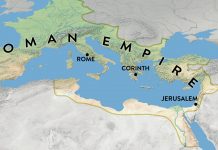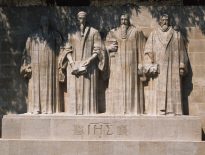On the basis of ancient, hidden non-canonical gospels, some commercial and half-learned scholars propagate sensational discoveries, which are in fact both old and novel speculations arising from the Bible’s silence on some aspects of Jesus’s life.
Yes, there were other gospels
The literary heritage of the old Church was much greater than what was left to us in the canon or outside of it. “Many have undertaken to draw up an account” of Jesus’ life and mission (Luke 1:1-4) based on their own experience or the testimony of others, but only four gospels have survived in the Biblical canon. Initially, the Gospel—the account of Jesus’s life and deeds—was transmitted orally.
The first evangelists were those who narrated the gospel as eyewitnesses (Acts 1:8; 2:5-11; 1 Corinthians 15:6). Many of them wrote authentic versions of the Gospel, as they knew it. Even the divinely inspired authors of the gospels, writing later, used such sources.
Luke explicitly acknowledges this, and Matthew and Mark seem to have depended on at least one other source, conventionally called “Q”.
Outside the canon
The canonical gospels were written early, in the years 50-85, when the witnesses to the events were still alive. At the same time, some had circulated false epistles in the name of the apostles (2 Thessalonians 2:2). No wonder false gospels, with a Gnostic agenda, also appeared.
Most of the non-canonical gospels are part of the collection of documents discovered at Nag Hammadi in Egypt. Here are some of them:
The Gospel of Thomas was written in the years 100-110 and was discovered in Egypt (1945) in the form of a proto-Gnostic manuscript in the Coptic language. It is an old forgery that claims to have passed on a secret teaching of the apostle Thomas, who had received it from Jesus. The writing indicates salvation through esoteric wisdom.
The Gospel of Peter was written between 100 and 160, two or three generations after Peter’s death, and was rediscovered in 1886. In addition to events that are known from the Biblical gospels, it contains legends, romanticisations and contradictions, the tendency to find excuses for the Romans’ hostility towards the Jews, and elements of Gnostic Docetism—the belief that Jesus did not have a real body, but only an apparent one (cf. 1 John 4:2-3; 2 John 1:7). This is why it was rejected by Church authorities as early as the second century.
The Gospel of Judas was written in the second century, a few generations after the death of Judas, was attested and rejected as early as the 180s, and was rediscovered in the form of some Coptic fragments after the 1970s. In this writing, Judas appears as the main hero, the favourite apostle, the partaker of the secret of the true gospel of deliverance from the flesh.
The Secret Gospel of Mark claims to be a second-century apocryphal book, closely related to the canonical Gospel of Mark and placed in the service of esoteric (Gnostic) meanings. Many prestigious scholars believe it is a modern imitation, a forgery dating from the 1950s.
The Infancy Gospel of Thomas was written in the second or third century by an anonymous non-Jew, in Greek or Syriac, and was attested by well-known manuscripts from the Middle Ages. It describes the misdeeds that Jesus supposedly did in the first 12 years of His life: at school, Jesus would reveal the Kabbalistic secrets of the Greek alphabet to His teachers. At home He would amaze His family and playmates with the miracles He performed. At the age of 5, on a Sabbath (!), He supposedly made twelve birds out of clay—an episode preserved in Islam as well.
The Gospel of Mary Magdalene is a Gnostic forgery with feminist tendencies, published in the second century and discovered in 1896. It focuses on Mary Magdalene as a leader above the apostles, who is said to have preached that the world of this creation is evil, illusory, and illegitimate and that the Saviour would come to help us discover our own spiritual, divine nature, so that we can return to eternal rest, beyond the constraints of matter, time, and pseudo-morality.
The Protoevangelium (or the Infancy Gospel) of James is one of the apocrypha written around the year 145, 80 years after the death of James, the Lord’s brother. It has been exploited by theologians ever since the third century, starting with Origen.
Some pious inventions that the Church will later capitalize on appear for the first time in this embarrassing bluff: the unique birth of Virgin Mary and her dedication to the Temple by Joachim and Anne; her marriage at the age of 12 to Joseph, an old widower with children; the visit of the midwives at the birth of Jesus, as witnesses that Mary would have remained ever-virgin, a fact apparently confirmed by Salome. Jesus is said to have been born in a cave (according to the Mithraic scenario).
The Gospel of Jesus’s Wife is the name given to a fourth-century piece of papyrus which contains a writing from the years 150–200, in which the following parts of a dialogue appear: “not [to] me. My mother gave me li[fe]… …’” Karen King, who recently published the excerpt, acknowledges that the document is not evidence that Jesus was married, but only that this view also circulated in (para-) Christian circles.
Gnosticism was a strong theosophical current, initiated by eccentric intellectuals, beginning in the second century, a Neoplatonic interpretation of Christianity, similar to the New Age Movement, which prepared the forms of later pagan-Christian syncretism. Various modern esoteric groups claim the Gnostic heritage.
The development of this spirit in recent decades is one of the main causes of the abandonment of Christianity, and it explains why the secret gospels are more interesting to some than the gospels of the Scriptures, which they seldom open.
No secret
Truth is transparent: only those writings that were known in the universal Church as coming from the apostles of Jesus, or other prophets and evangelists associated with them, were included in the New Testament canon. In addition to the writings preserved in the canon, there were writings that a few people inserted into the canon for a brief period of time. Nevertheless, the pseudonymous gospels were not even proposed for canonization, because they were late and came from false and heretical sources.
Only the Gospel of Thomas had some support for a time. Otherwise, a simple comparison between the canonical and the false gospels is enough to see that the theories about a conspiracy to keep the “true gospels” secret are designed for commercial purposes, with an anti-Christian agenda.




















